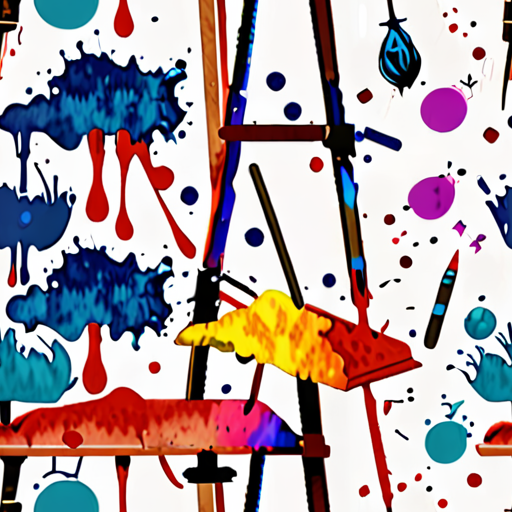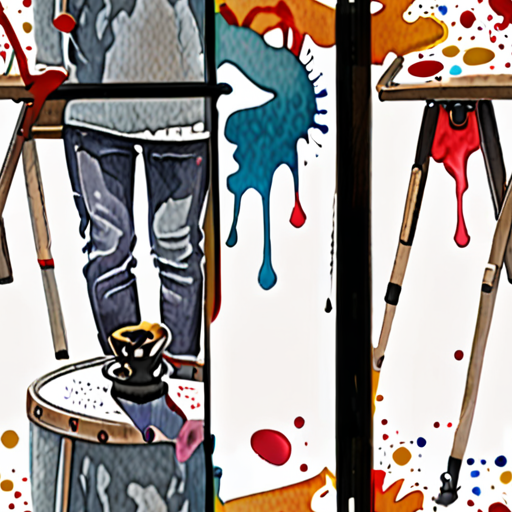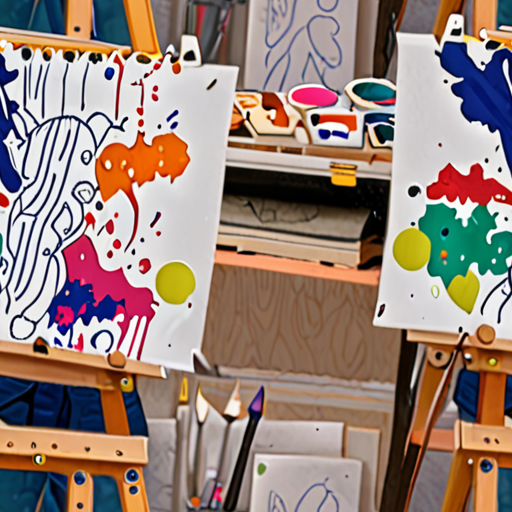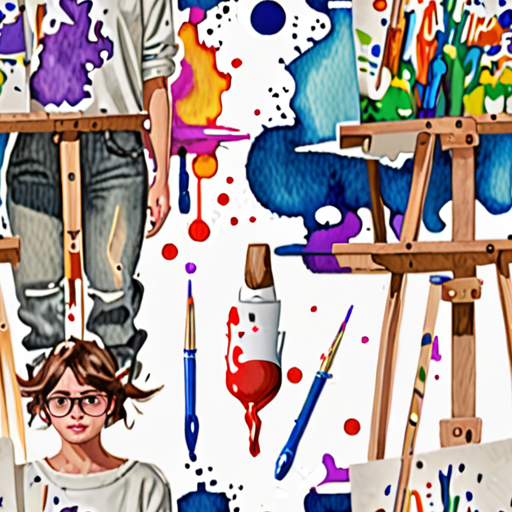“`html
Embarking on your artistic journey can be both exhilarating and challenging, especially when you’re a beginner eager to discover the right art tips for beginners. This article will provide you with insightful advice to enhance your skills, offering essential techniques and guidance to help you transition from novice to adept. Whether you’re curious about mastering the seven fundamental rules of art, demystifying the 1/3 rule, or seeking simple art tips for beginners, we’ve broken down each aspect to make your artistic exploration seamless and fulfilling. Discover practical strategies for drawing for beginners, easy nail designs, and even digital art tips for beginners—each insight tailored to elevate your understanding and proficiency in the art world. Get ready to embrace new artistic horizons and unlock your creative potential with these expertly crafted art tips for beginners.
“`
Improving Your Art Skills as a Beginner
To become a skilled artist, it’s essential to continually challenge yourself and explore various techniques.
-
Practice Regularly
Set aside dedicated time each day or week to hone your skills, whether it’s drawing, painting, or sculpting.
-
Learn from Others
Study the work of professional artists, attend workshops, and join online communities to gain valuable insights and feedback.
-
Experiment with Different Mediums
Try out various materials and tools to discover what works best for you and expands your creative possibilities.
-
Develop Your Observation Skills
Pay attention to details, shapes, textures, and colors to improve your ability to accurately depict subjects.
-
Break Down Complex Subjects into Simpler Forms
Focus on breaking down intricate subjects into basic shapes and forms to simplify the process and enhance your understanding.
-
Draw from Life and Reference Images
Observe and draw subjects directly from life or use reference images to improve your accuracy and attention to detail.
-
Join Online Communities and Forums
Connect with fellow artists, share your work, and learn from others in online forums and social media groups.
-
Take Online Courses and Tutorials
Access a wealth of educational resources, including video lessons, webinars, and online classes, to further develop your skills.
-
Participate in Local Art Events and Exhibitions
Showcase your work, receive feedback, and stay connected with the local art community by participating in events and exhibitions.
-
Stay Inspired and Motivated
Follow your favorite artists, visit museums and galleries, and engage in activities that spark creativity and enthusiasm.
By incorporating these tips into your daily routine, you’ll be well on your way to improving your art skills and achieving your goals as a beginner artist.
For more information on art techniques and resources, visit our website at Artfull Journey .
The 7 Rules of Art
The principles of art and design are essential components that contribute to the overall aesthetic appeal and effectiveness of a piece of art.
-
Balance
Balance refers to the distribution of visual elements within a composition, creating a sense of stability and harmony. There are two types of balance: symmetrical and asymmetrical.
-
Contrast
Contrast involves the use of different colors, textures, and shapes to create visual interest and draw attention to specific areas of the artwork.
-
Emphasis
Emphasis is the focal point of the artwork, drawing the viewer’s eye to a particular area or element. It can be achieved through size, color, or placement.
-
Movement
Movement refers to the dynamic energy and motion created within a composition, often achieved through the use of lines, shapes, and colors.
-
Pattern
Pattern involves the repetition of similar elements, such as shapes, colors, or textures, to create a cohesive and visually appealing design.
-
Rhythm
Rhythm is the repetition of similar elements, such as shape, size, or color, to create a sense of musicality and visual flow.
-
Unity
Unity refers to the cohesion and harmony of the individual elements within a composition, working together to create a unified whole.
By understanding and applying these seven principles of art and design, artists can create visually appealing and effective compositions that engage and communicate with their audience.

The 13 Rules in Art
The 13 rules in art refer to a set of guidelines developed by John Raynes, a British artist and educator, which aim to provide a framework for creating balanced and visually appealing compositions.
- Rule 1: Balance – The composition should have a sense of balance, with visual weight distributed evenly throughout the artwork.
- Rule 2: Contrast – High contrast between light and dark values creates visual interest and draws the viewer’s attention.
- Rule 3: Emphasis – A clear focal point or center of interest helps guide the viewer’s eye through the composition.
- Rule 4: Movement – Lines, shapes, and forms can be used to create movement and energy in the artwork.
- Rule 5: Pattern – Repeating patterns can add texture and visual interest to the composition.
- Rule 6: Unity – A cohesive color scheme and consistent style help tie the composition together.
- Rule 7: Proportion – Elements within the composition should be proportional to each other and to the overall size of the artwork.
- Rule 8: Alignment – Aligning elements along a grid or axis can create a sense of order and stability.
- Rule 9: Color Harmony – Colors that work well together can enhance the mood and atmosphere of the artwork.
- Rule 10: Texture – Different textures can add depth and visual interest to the composition.
- Rule 11: Shape – Geometric and organic shapes can be used to create visual interest and balance.
- Rule 12: Value – The use of light and dark values can create depth and dimensionality in the artwork.
- Rule 13: Space – Negative space can be used to create a sense of breathing room and visual balance.
By applying these 13 rules, artists can create compositions that are visually appealing, balanced, and effective in communicating their intended message.

What Should a Beginner Artist Learn First?
As a beginner artist, learning the basics of drawing is a great first step towards developing your skills and exploring your creativity.
- Understanding the Basics of Drawing
- Developing Basic Skills
- Familiarizing Yourself with Different Mediums
- Practicing Regularly
- Seeking Inspiration and Guidance
Drawing is a fundamental skill that every artist needs to master, regardless of the medium or style they choose to work with. By understanding the basics of drawing, you’ll be able to create realistic and proportionate representations of objects and subjects.
Basic skills such as perspective, proportion, line art, shape, texture, value, and color are essential for creating visually appealing artwork. Practicing these skills will help you develop your hand-eye coordination, fine motor skills, and spatial awareness.
Experimenting with different mediums such as pencils, charcoal, ink, watercolors, and acrylics can help you discover what works best for you and your unique style. Each medium has its own set of characteristics, advantages, and challenges, so it’s essential to explore and understand them before committing to a particular one.
Consistency is key when it comes to improving your drawing skills. Set aside time each day or week to practice drawing, and don’t be afraid to experiment and try new things. The more you practice, the better you’ll become at capturing shapes, proportions, and details.
Surround yourself with art, read books, watch tutorials, and take classes to learn from experienced artists and instructors. Join online communities, forums, and social media groups to connect with fellow artists, share your work, and get feedback.
By focusing on these essential skills and principles, you’ll be well on your way to becoming a skilled artist and unlocking your full creative potential.
Additional Resources:
- Drawing Academy offers a comprehensive course on drawing fundamentals, covering topics such as perspective, proportion, line art, and shape.
- New Masters Academy provides in-depth tutorials and courses on drawing, painting, and sculpture, taught by experienced artists and instructors.
- Proko is a popular website offering free and paid tutorials on figure drawing, anatomy, and gesture drawing, created by Stan Prokopenko.
Challenges Faced by Beginner Artists
As a beginner artist, I’ve encountered several difficulties that have hindered my progress and creativity.
- Mastering Proportion and Perspective
- Rendering Realistic Textures and Details
- Developing a Consistent Style
- Overcoming Self-Doubt and Criticism
- Managing Time and Productivity
- Staying Inspired and Motivated
One of the most significant challenges I face is accurately drawing proportions and perspective. It requires patience, practice, and a solid understanding of spatial relationships.
Another hurdle I encounter is capturing realistic textures and details in my artwork. This demands attention to detail, observation skills, and a willingness to experiment with different techniques.
I often struggle to establish a consistent style, which can lead to confusion and frustration. Finding a balance between experimentation and consistency is crucial for growth as an artist.
Self-doubt and criticism can be debilitating for beginners. Learning to accept constructive feedback, develop a growth mindset, and celebrate small victories helps me stay motivated and focused.
Effective time management and productivity are essential for meeting deadlines and making progress on projects. Prioritizing tasks, setting realistic goals, and minimizing distractions enables me to stay organized and efficient.
Maintaining inspiration and motivation is vital for sustained creativity. Exploring new techniques, attending workshops, and connecting with fellow artists helps me stay engaged and enthusiastic about my craft.
At Artfull Journey , we understand the challenges faced by beginner artists and offer a supportive community, valuable resources, and expert guidance to help you overcome these obstacles and achieve your artistic goals.

What is the First Thing I Should Draw?
As an artist, choosing what to draw first can be overwhelming due to the numerous possibilities.
- Start with Simple Shapes
- Experiment with Lines and Patterns
- Draw from Observation
- Practice Drawing Basic Forms
Mastering basic shapes such as circles, squares, triangles, and lines is essential for creating more complex drawings.
Lines and patterns can add texture and interest to your artwork, making it visually appealing.
Observe the world around you and draw what you see, whether it’s a still life, landscape, or portrait.
Familiarize yourself with basic forms such as spheres, cylinders, and boxes to create more realistic drawings.
Remember, the key to improving your drawing skills is consistent practice and patience.
Tips for Beginners
- Set Realistic Expectations
- Use Reference Images
- Experiment with Different Media
- Join a Community
Don’t expect to become a skilled artist overnight. Set achievable goals and celebrate small victories along the way.
Reference images can help you accurately depict proportions, textures, and details in your drawings.
Try out various drawing tools and mediums to discover what works best for you and your style.
Connect with fellow artists online or in-person to share knowledge, receive feedback, and stay motivated.
Conclusion
The first thing you should draw is something that sparks your creativity and inspires you to continue practicing.

0 Comments